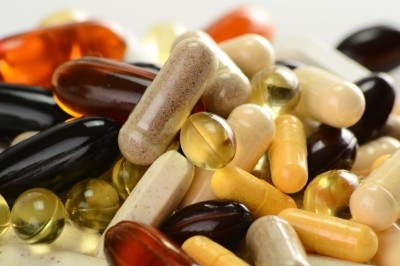Polyphenols, probiotics, delivery systems and sports nutrition: key lessons from 2014's special editions

Polyphenols
Polyphenols are one of the botanical active ingredients with the longest history of use and consumer acceptance, especially in the form of tea. Innovation in the sector continues as new botanical sources are discovered and new delivery modes help deal with some of the ingredients’ bioavailability concerns. But the science in the sector still needs to catch up with the promise, experts say.
In the science realm, a paradigm shift is needed in the study of polyphenols to better understand the bioavailability, bio-activity, and the role of the gut microbiota in polyphenol metabolism and health benefits, say experts from academia and industry.
Consumption of foods that are rich in polyphenolic compounds has long been associated with a reduction in the risk of a number of chronic diseases, including cardiovascular disease, cancer, and inflammatory diseases.
Despite the epidemiological associations between polyphenols and health, the science to help us better understand the compounds, and formulate good products, has some way to go, said Dr Jess Reed, a professor at the University of Wisconsin-Madison, and CSO of Complete Phytochemical Solutions, LLC, a consultancy with over 80 years of collective research experience developing and applying analytic methods to assess bioactivity, authenticity and standardization of fruits, forages, extracts and value-added products.
“We need a shift in the paradigm,” said Dr Reed. “We need better science to better inform the regulators and consumers, but we’re behind. We need more investment in the science, and the market has to bear some of the cost.”
One ingredient for which such investment has been made is whole grape extract, on which a study was done to measure how daily intake of a whole grape extract may improve antioxidant levels, and improve cholesterol levels, according to the first North American study to report such measures.
In addition, results published in the Journal of Functional Foods indicated that levels of 8-isoprostane (a marker of oxidative stress) and oxidized LDL (a risk factor for cardiovascular disease) decreased in people with pre-hypertension, overweight, and/or pre-diabetes.
“These results are of clinical significance in this population of subjects as the role of HDL-C in reverse cholesterol transport is well documented,” wrote the researchers, “and is believed to be cardioprotective, with each 1 mg/dL increase in HDL-C being associated with a 2–4% reduction in the risk of coronary heart disease.
Another large scale study, the international PREDIMED (Prevencion con Dieta Mediterranea) study, found that Increased intakes of polyphenols may reduce the risk of cardiovascular disease by an impressive 46%.
The science behind polyphenols seems to be having some effect. Polyphenols usage has risen 69% in five years, and the global tea polyphenols market is set to hit $368 million by 2020.
Prebiotics and probiotics
Underpinning benefits with solid science results is also a topic of discussion in the realm of prebiotics and probiotics. And it’s complicated by an imprecise definition of what a healthy gut means. No generally accepted diagnostic criteria exist to define what a healthy gut looks like. Practitioners have no tests, as they do for cardiovascular health, liver function or a host of other health parameters, that would yield values that could tell them if a given patient is fine or is approaching a danger zone.So experts agree that at the present level of scientific understanding, gut health is more about what isn’t as opposed to what is. It’s like one of those illustrations in which the true image emerges in the negative space formed by detailed sub-images on the periphery, in this case all the things that can go wrong with the human digestive system forming the boundaries.
“First, a healthy gut is the lack of issues with digestion,” said Scott Bush, vice president of marketing for DuPont Nutrition and Health. “You can almost define it by what it isn’t as opposed to what it is.”
One of the innovative areas in the field is the use of probiotics to alter health in the mouth, with the idea that this is where the gastrointestinal tract begins. One of the best known probiotics for oral health was developed by scientists at the University of Otago in New Zealand: BLIS K12 is a specific strain of Streptococcus salivarius (S. salivarius), which secretes powerful antimicrobial molecules called BLIS: Bacteriocin-Like-Inhibitory Substances.
BLIS K12 is an oral probiotic that is said to support healthy bacteria in the mouth for long-term fresh breath and immune support.
Another up-and-coming ingredient to support oral health is offered by Florida-based Oragenics. The company’s proprietary blend of S. oralis strain KJ3sm, S. uberis strain KJ2sm, and S. rattus strain JH145 is available under the ProBiora3 brand name. The company also has finished products called EvoraPlus and EvoraPro.
Manufacturing multiple species products puts a special strain on companies’ quality control systems, said international probiotic expert Prof. Gregor Reid. At the Probiota 2014 meeting in Amsterdam, Reid cautioned industry that, while these products are popular, still very little is known about how these species interact with one another once they have begun to colonize the gut.
Delivery Systems Innovation
How to better deliver active ingredients, whether they are insoluble polyphenols or delicate probiotics or others, is of constant concern to companies with the dietary supplements business. One company, NanoSphere Health LLC, believes going small is the answer. Disruptive technologies to produce natural nano-sized nutraceuticals could ‘revolutionize’ how dietary supplements deliver their benefits, with smaller most definitely better for enhancing bioavailability and bio-efficacy, says Dr Richard Kaufman, NanoSphere’s chief science officer.
“There has been very little discovery around delivery technologies in the nutraceutical industry,” he told NutraIngredients-USA. “We’ve seen some with curcumin and CoQ10.,” he said. “Let’s work to improve the delivery of ingredients people are already using,” he said. “Very few products are being nano-sized to overcome barriers in the body and allow compounds to pass cell membranes.”
NanoSphere launched its Evolve Nutrients finished product range at the end of April. The dietary supplement products use nano-sizing of nutraceuticals to enhance bioavailability and bio-efficacy. the CSO of NanoSphere Health Sciences, LLC.
Gummies as a delivery system still has great potential, Pharmavite told NutraIngredients-USA, and the need to find more palatable ways to take fish oil drives innovation, too. But experts also cautioned that delivery system innovation can push regulatory boundaries.
Sports Nutrition
Sports nutrition is often thought of as the tip of the spear when it comes to growth in the dietary supplements business. Consumers are looking to sports nutrition formulators to provide them with products that not only help them maintain health and forestall the potential ravages of aging but to actually make them better. Sports nutrition brands have taken notice, and are altering their lines to reach to an ever broader segment of the marketplace, positioning their products to support active lifestyles as opposed to appealing only to the committed gym rat.
One of those leading brands in Swisse Wellness. Changing consumer attitudes to health and similar consumption levels in the US and Australia give Swisse Wellness an opportunity to excite consumers with a new sports nutrition range that is not just focused on the muscle men and gym junkies, says Ulrich Irgens, Executive Vice President of Swisse Americas.
“With the ever increasing rate of obesity, individuals are looking for healthy measures to aid them in improving their lifestyles – protein supplements combined with an exercise program is one key measure,” Irgens told NutraIngredients-USA. “Swisse sees this as an opportunity to offer our product, which appeals to the average, health-conscious individual.”
But delivering on that promise of “better, faster, stronger” can bring with it ethical challenges. Former steroid seller Kirk Radomski has seen this first hand; after being convicted in the Major League Baseball performance enhancing drug scandal, Radomski founded a dietary supplement company focused on sports nutrition. In the process of examining competitors’ products, Radomski said he thought that in a twisted way there were higher ethical standards in the PED game; those products at least met label claim, so to speak.
The reputation of the supplements industry—especially in the realm of sports nutrition—has been dragged through the mud in recent years as athlete after athlete has blamed a tainted supplement for having failed a drug test. While responsible players in the industry opine that these tainted products are not in fact supplements but illegal drugs, that point of view doesn’t hold much water with Michael O’Keeffe, a reporter for the New York Daily News who has covered many of the drug scandals in major league sports. For O’Keeffe (who has also written for Natural Foods Merchandiser magazine), it is the open industry created by DSHEA that is partly to blame.
One expert in the field feels that most of the research in what works in sports nutrition has been done on and for men. Do women need the same things, just less of them based on body weight, or are their needs subtly different? She has founded a company with the goal to find out.
The sports nutrition special edition also looked into the veracity of athletes’ claims about tainted supplements and whether the ingredient yohimbe ought to be banned as ephedra was.
Tomorrow: Part 2 looks at NutraIngredients-USA’s special editions on Outsourcing, Bone & Joint Health, Latin America, Healthy Aging and Functional Foods.















